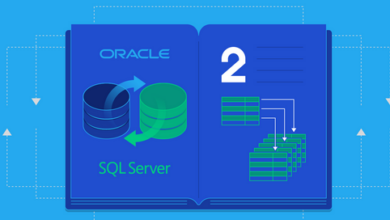Top 10 Diet Trends for 2021
 It’s never too early to start preparing for the new year and everything good it brings. But before you start making any big plans, you have to ensure you feel and look your best. So what’s in store for 2021 diet trends? Some hits are still here, some are forgotten and some are just emerging. Here are the top 10 diet trends for 2021.
It’s never too early to start preparing for the new year and everything good it brings. But before you start making any big plans, you have to ensure you feel and look your best. So what’s in store for 2021 diet trends? Some hits are still here, some are forgotten and some are just emerging. Here are the top 10 diet trends for 2021.
Anti-Covid diet
COVID is still on everyone’s lips and affecting every trend imaginable, food trends included. The WHO actually put out a list of dietary recommendations that can help battle this horrible disease putting emphasis on a balanced diet for a strong immune system. To stay COVID-proof, you want to eat 4 servings of fruit and 5 servings of veggies a day, and throw in some superfoods like broccoli and grapefruit for Vitamin C and nuts and avocado for Vitamin E.
Keto Lite
Unlike traditional keto diet which focuses on fats while limiting protein, keto lite is a high-protein diet with moderate fat intake and low sugars and carbs. Gluten-free foods are also desirable in keto lite sphere since this implies low carb content. This diet is safe for everyone, that’s why it’s so popular.
Intermittent fasting
This is not exactly a diet, but more of a way of consuming food. By breaking the snacking cycle, intermittent fasting allows natural and effortless weight loss. The dieter shortens their eating window to usually 8 hours (16/8 method is the most popular one) and fasts for the remaining 16 hours. It might sound extreme and exhausting, but practitioners report high energy, better focus, less bloating and overall boost in wellbeing while fasting.
Plant-based flexitarian
This plant-powered diet is all about plant-based foods (about 90%) but it’s much more flexible than veganism since it allows free-range and grass-fed meats. Protein derived from plants is especially important for this diet, so feel free to take your plant protein supplements before and after a gym session. The plant-based flexitarian diet is great for all people who want to embrace veganism but are not strictly there yet or can’t afford it due to their workouts, job requirements or health conditions.
DASH
This diet is perfect for those who want to control their heart disease and blood pressure. It focuses on eating foods that reduce blood pressure and strict control of sodium intake. Besides sodium limitation, this diet is stereotypically healthy with plenty of veggies, fruits, whole grains, fish, lean protein and healthy fats.
The Mediterranean diet
Did you know that people living in the Mediterranean have a lower number of lifestyle diseases like heart attacks, strokes and diabetes? This fact can be due to their diet which consists mostly of healthy veggies (a lot of tomatoes), fruits, legumes, whole grains, seafood and olive oil.
The MIND diet
If the Mediterranean diet and DASH diet had a child, it would be called The MIND diet. This diet focuses on foods that improve brain health and function so it’s mostly popular among the aging Baby Boomers since it reduces the risk of Alzheimer’s and dementia. The diet itself is mostly the Mediterranean diet with limited sodium—fruits, veggies, nuts and well-sourced fish. Low-fat and low-sodium foods are also welcome, together with superfoods that support brain health like turmeric, dark chocolate, Omega-3s and broccoli.
Low FODMAP diet
According to some estimates, between 10 and 15% of all adults suffer from IBS. As a result, many of them are seeking dietary strategies to prevent the symptoms of this condition. Low FODMAP is one of the best diets to combat IBS. The name stands for five food items that should be avoided: Fermented Oligosaccharides (wheat and legumes), Disaccharides (milk and yogurt), Monosaccharides (fructose-containing fruits) and Polyols (lychees and blackberries).
The Volumetrics
This diet’s motto is: Eat more, consume fewer calories. The idea behind it is to fill up on foods that trigger that “full feeling” while consuming a lower level of calories. Foods like broths and non-starchy veggies are the main focus of this diet, while all things that are small yet full of calories are to be avoided.
Paleo Whole Foods diet
This diet is nothing new, but even after 10 years, it’s still going strong. It argues that people should eat like our ancestors, consuming hunter-gatherer foods like berries, nuts and wild-caught animals like chicken and fish. The Paleo Diet promotes the intake of high-impact proteins like collagen peptides and grass-fed whey. Since prehistoric people didn’t farm, anything produced with industrialized farming techniques (grains, wheat, corn, processed foods) are banned. Basically, if you can cook your dinner without any sauce and prepare it over an open fire, you’re doing Paleo right.
The point of each and every one of these diets is to stay healthy and improve your physical and mental form. Check them out, study them in-depth and see which one fits your needs and lifestyle the best. If you don’t have any specific goals (losing weight, gaining muscle) you can adapt these diets to fit you to the T and still gain many benefits.







